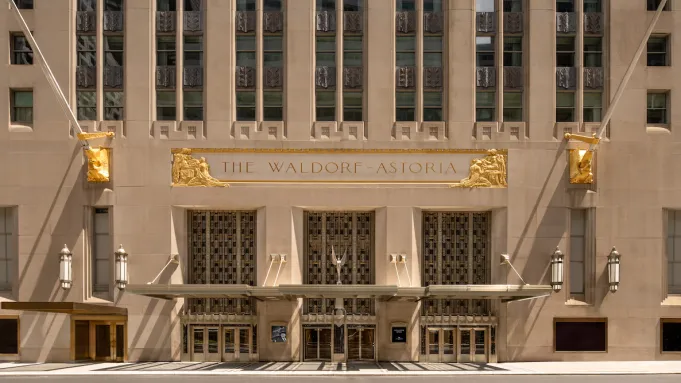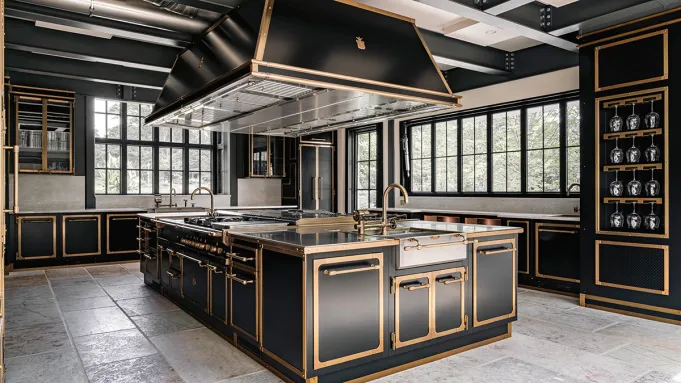
As ballyhooed as New York’s many iconic and historic hotels are, for decades they’ve been mostly sizzle, not a lot of steak. The most exciting city stays have been newer properties, like the beautifully curated, artistic Fifth Avenue Hotel, or the sleek, contemporary style and service of wellness-led Aman New York. Yet within the last few years, NYC has seen a cascade of long-planned, highly anticipated renovations. “I think it was long overdue to keep up with other places around the world who have reputations as being incredible hotel cities, such as London and Paris,” says Josh Alexander, a luxury travel advisor with ProTravel International, a Virtuoso agency. “New York City was falling behind.”
The starry list of NYC hotels that have completed rejuvenations is (in alphabetical order) include: The Carlyle (reopened in 2021 after three years), Hotel Chelsea (reopened in 2022 after 11 years), Four Seasons Midtown (reopened in November 2024 after four years), Park Hyatt (remained open during a 2024 renovation), the Peninsula (remained open during a 2024 renovation), St. Regis (remained open besides public spaces, which reopened in August 2024 after renovation), The Surrey (reopened under the Corinthia banner in October 2024), W Union Square (relaunched in September 2025), and the Waldorf Astoria (reopened July 2025 after 8.5 years).
Whew. Do any of these revamps live up to the hype? To say that there’s pressure involved in getting this right—the legacies at stake amid a jam-packed, competitive arms race, to say nothing of the monetary investment —is an understatement. “We received tons of letters from New Yorkers saying, ‘Don’t you dare this mess up,’” says Dino Michael, senior vice president and global head for Hilton’s luxury brands, of the enormous eight-and-a-half-year Waldorf Astoria New York project.

A new Peacock Alley, fit for strutting.
Joe Thomas
The classic hotel, at its current Park Avenue address since 1931, reduced its room count from 1,400 to 375 rooms and suites, along with 372 residences, while retaining its Gilded Age grandeur: the 148,000 marble tiles in the circular “Wheel of Life” mosaic in the Park Ave lobby; Cole Porter’s “High Society” grand piano; the reassembled Waldorf clock tower, first commissioned by Queen Victoria in 1893, and so much more. “We haven’t lost any of the magic,” Michael says.
Renowned lobby bar Peacock Alley is back in action, with a cocktail program now spearheaded by New York bartending icon Jeff Bell of Please Don’t Tell fame. It’s a spot for New Yorkers to honor a big occasion, for celebrities to come and flaunt their status, and for tourists to recline and get a taste of it all. When a storied hotel succeeds with such a face lift, it’s a moment for all of the above to rejoice, and it appears that the Waldorf Astoria has managed to achieve that goal. After almost a decade on the shelf—and construction costing a reported $2 billion—they better hope that they did.
The key to success starts in the kitchen
There’s a common thread through the most successful of these overhauls: Build a top-tier food and beverage program, attract the locals, and the tourist dollars and international prestige will follow.
“Even if you’re not staying [in the hotel]—if you’re just living or working in New York—you want to go for the restaurant or the bar,” Alexander says. “They’re making these gathering places, and that’s what they’re getting right.”
Alexander calls out several of the completed rebirths for their success on this front. “Look at what Rosewood has done with The Carlyle (from $895) and Bemelmans Bar, taking these types of iconic old school spots and making them cool and hip again,” he says. A stiff Bemelmans martini while enjoying a night of live music is now a hallmark of a classy NYC night out. The bar somehow straddles the line between regular’s haunt and tourist attraction.
He also shouts out The St. Regis (from $895), which spruced up the legendary King Cole Bar to coincide with its 90th anniversary, and the hotel’s 120th anniversary, last fall. The iconic bar—which also happens to be the home of the original, proto-Bloody Mary, the Red Snapper—has been refreshed while preserving its deep history. It’s packed with locals nightly, attracting queues of devotees waiting to grab a bar stool and gaze at the restored Maxfield Parrish Old King Cole mural, or for a chance to observe the hotel’s nightly Champagne sabrage ritual.

Grab a seat at King Cole Bar to admire the restored Maxfield Parrish Old King Cole mural.
As part of the overhaul, The St. Regis renovated its lobby, as well as the Drawing Room in front of the bar, transforming it into a stylish but relaxed lounge serving $36 lobster rolls and bacon cheddar burgers. La Maisonette, a cafe open for breakfast, lunch, and afternoon tea, also made a re-entrance following a 20-year closure.
King Cole Bar and Peacock Alley are true attractions, elevating the updated hotels and—dare we say—making Midtown cool again. “Midtown, rightfully so, has long been thought to be kind of dead after 6 p.m. with no good restaurants or bars. It’s great for New York and the hotel industry to begin changing that,” Alexander says. ”People want to come and stay in Midtown and the Upper East Side now.”
An unexpected winner from this round robin of renos is the W Union Square (from $650), which celebrated the completion of its $100 million renovation spearheaded by the Rockwell Group this September. It may not have the same legacy as the Waldorf Astoria or the St. Regis, but it does call the 1911 Beaux-Arts Guardian Life building home, and has been an Union Square institution in its own right for the past quarter century.
W Union Square is now the brand’s global flagship—the torchbearer for W Hotels’ transition from a neon-drenched, early aughts party vibe to a more sophisticated, mature look and feel that emphasizes luxury as much as lifestyle. “It’s almost becoming a showroom of what we believe is the benchmark for the brand,” says George Fleck, senior vice president and global brand leader for W Hotels, Edition, and St. Regis.
Food and bev are at the heart of the project here as well, including the Living Room, which morphs from daytime cafe to evening lounge, and the new Guardian Rooftop, complete with a retractable roof for all-season revelry. On the ground floor is Seahorse, operated by Mercer Street Hospitality, a modern seafood brasserie with both streetside and lobby entrances. Fleck notes that, in New York, “you’re competing against some of the most incredible culinary offerings in the world,” so they do an “intense market study” to find their niche before renovating.
When New York decides to do something, it does it big, and the revamp of the city’s luxury hotel scene is no exception. “I love that so many New York hotels are getting these renovations because it really helps lift the entire market,” says Fleck. The world’s best are watching.
instagram:
Error: No feed with the ID 1 found.
Please go to the Instagram Feed settings page to create a feed.









